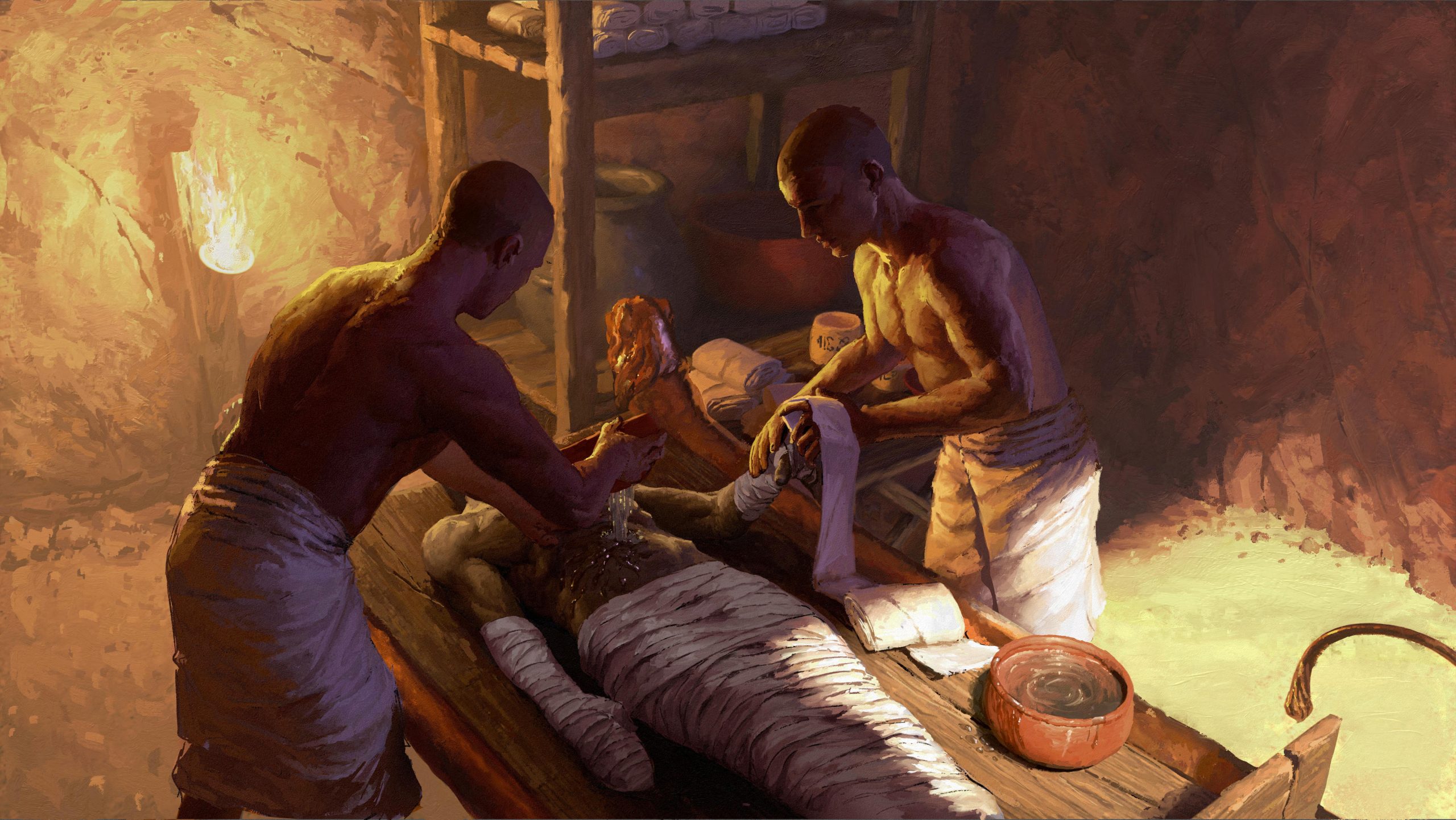
[elfsight_social_share_buttons id=”1″]
The ancient Egyptians employed a host of exotic ingredients — some apparently imported from as far away as Southeast Asia — to mummify their dead, as revealed by a new analysis of containers unearthed at an embalming workshop more than 2,500 years old.
Researchers on Wednesday unwrapped the results of biochemical examinations of 31 ceramic vessels that once held embalming substances at the archaeologically-rich Saqqara site near Cairo, deciphering the chemistry of the mummification practice used for millennia to prepare Egypt’s dead for the afterlife.
The ancient Egyptians viewed the preservation of the body after death as crucial to secure a worthy existence in the afterlife. Various substances, with roughly a dozen identified in this study, were applied to preserve human tissue and prevent decomposition stench — long before any modern understanding of microbial biology — before the body was wrapped.
For the past two centuries, scientists could only speculate about certain embalming ingredients mentioned in ancient texts. But this workshop, discovered in 2016 by the late Egyptian scientist Ramadan Hussein near the ruins of the even-older pyramid of Unas and the step pyramid of Djoser, held beakers and bowl-shaped vessels labeled with the ancient names of their contents, sometimes bearing instructions such as “to put on his head.”
The researchers analyzed chemical residue in the containers.
“Most of the substances originated from outside Egypt,” said archaeologist Philipp Stockhammer of the Ludwig Maximilian University Munich in Germany, lead author of the study published in the journal Nature.
Many came from the eastern Mediterranean region, including cedar oil, juniper and cypress oil, and tar, bitumen, and olive oil. But a real surprise was the presence of substances sourced apparently from forests in Southeast Asia thousands of miles away. There was gum from the dammar tree, which grows only in tropical Southeast Asia, and the resin of the elemi tree, which came from Southeast Asia or tropical Africa.
“This points to the fact that these resins were traded over very large distances and that Egyptian mummification was somehow a driver towards early globalization and global trade,” Stockhammer said.
“Embalming was carried out in a well-organized, institutional way,” said biochemist and study co-author Mahmoud Bahgat of the National Research Centre in Cairo.
The underground embalming workshop was accessible through a shaft 40 feet deep. It dates to Egypt’s 26th dynasty, or Saite period, from 664-525 BC at a time of Assyrian and Persian regional influence and waning Egyptian power. This was roughly two millennia after the Giza pyramids were built during the Old Kingdom period and six centuries after pharaoh Tutankhamun — whose mummy and fabulous funerary objects were found in 1922 — reigned during the New Kingdom period.
“There have been countless studies on Egyptian embalming, but our lack of knowledge on which substances are behind the different names and the lack of any practical descriptions have hindered any further understanding,” said study co-author Maxime Rageot, a biomolecular archaeology specialist at the University of Tübingen in Germany. “Now, we can provide answers.”
An embalming substance called “antiu” in ancient texts long had been translated as the resins frankincense or myrrh. This study revealed it as a mixture of cedar oil, juniper and cypress oil, and animal fats.
Three recipes, with ingredients such as elemi resin, pistachio resin, byproducts of juniper or cypress, and beeswax, were identified for embalming the head. Other recipes were used for skin softening or body cleaning.
“They knew how to select and mix antimicrobial substances which enabled perfect skin preservation,” Stockhammer said.
“There are still secrets to be unraveled. Due to new methods, it is possible to shed new light on certain aspects, not just using new finds such as the vessels coming from Saqqara, but also objects stored in museums and collections,” added the University of Tübingen Egyptologist and study co-author Susanne Beck.
Copyright 2023 Thomson/Reuters
